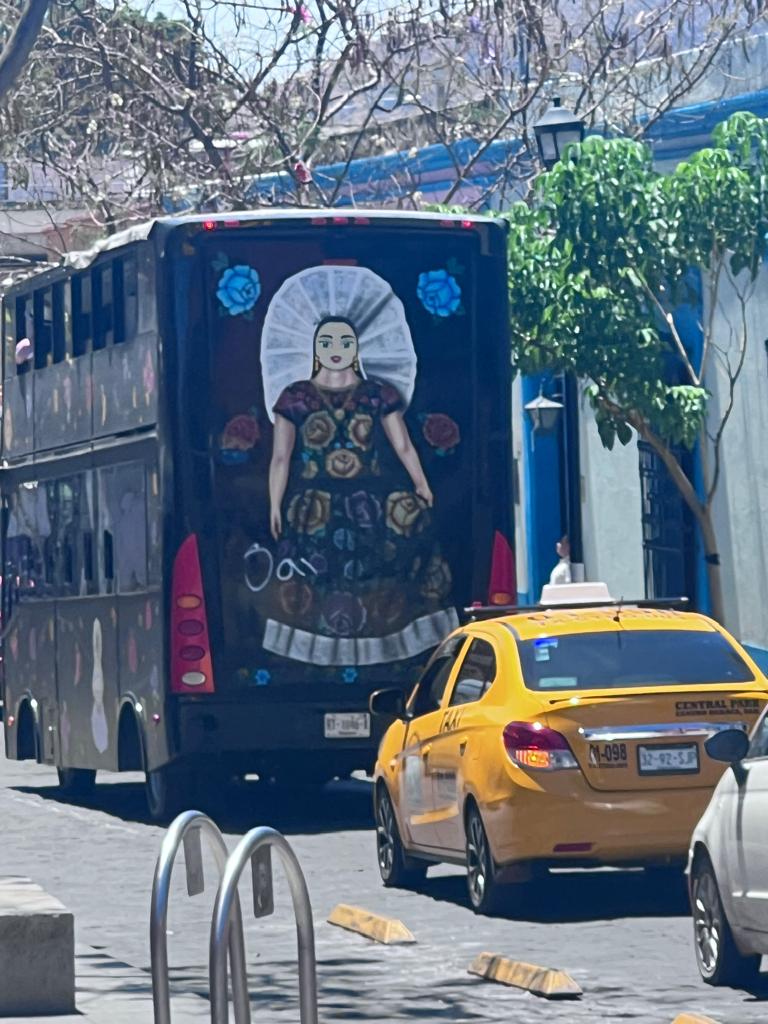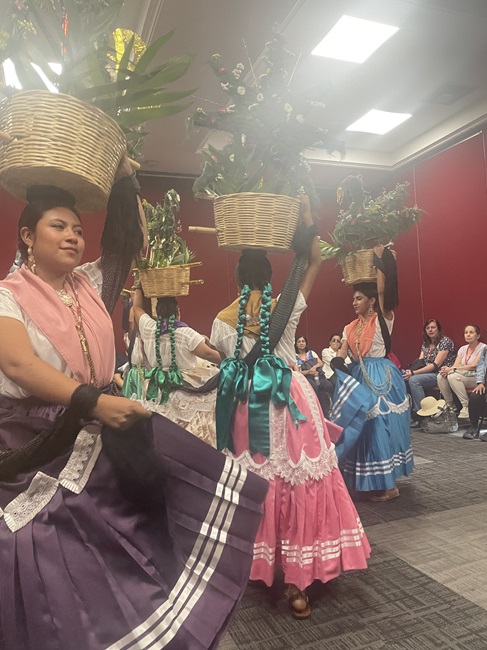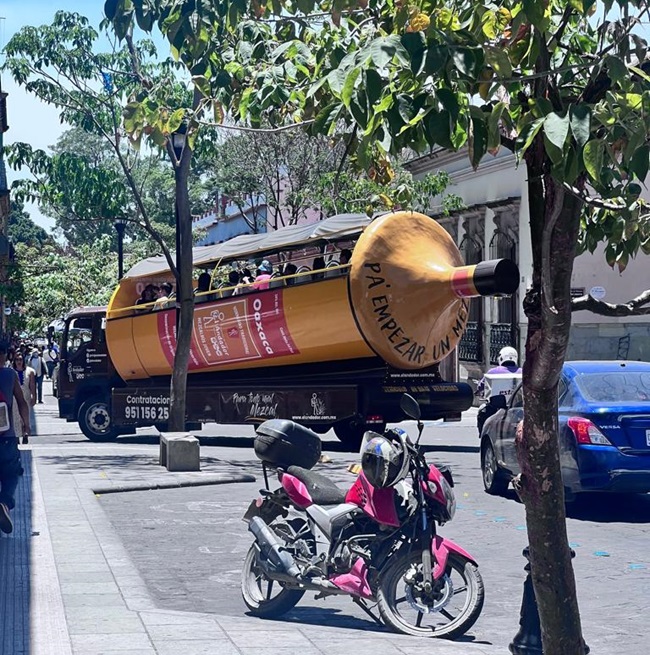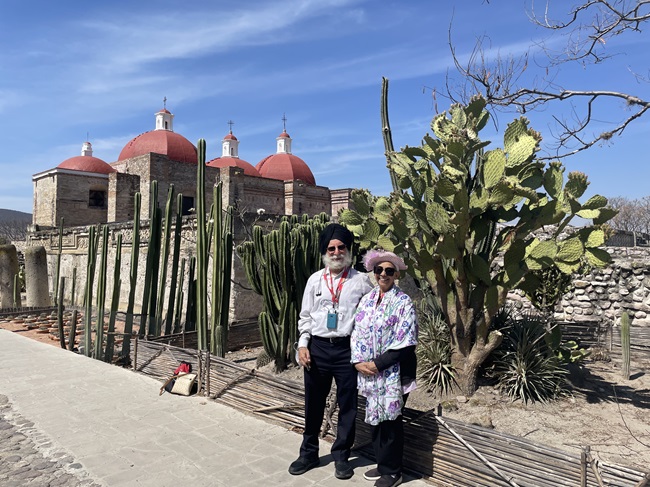Jan 06, 2026
Jan 06, 2026

As our bus pulled close to the hotel, we were told that we would be disembarking from the bus at the intersection a block away from the hotel as the road was not wide enough for the bus. The road being so narrow that the bus could not go through it, was a big surprise. But this was just a beginning as we were going to encounter a few more surprises. So, we disembarked from the bus and walked to the hotel lobby to check in. Before checking in we were taken to a room and were welcomed by the traditional dance.

The Zapotec women wore traditional dress, jewelry, colorful aprons, braided hair tied with ribbons, and one man was dressed as a ghost.
Luckily the bags were being taken care of by the hotel concierge. We checked in the hotel and after some rest just went to get some fresh air. Taking a walk along the streets really made us realize that the roads were really not wide enough for the autos vehicular traffic becoming bottleneck. The roads were originally designed for horse drawn carriages. The narrow roads, uneven sidewalks, roadside hawkers make for a memorable walk. The evening stroll turned into an unimaginable experience of being swamped by all the townsfolks heading in one direction towards the church downtown. Traveling from point A to B transports one to the slower pace of life of yesteryears. If one is burned by the fast pace of modern life and is looking to a slower pace of life, then Oaxaca is not going to disappoint you.
Oaxaca is a bastion of indigenous culture and colonial history that has earned the UNSECO world heritage site status. It is considered as the cradle which gave corn to the world, still rules as the staple diet in the region. The local art scene is quite unique and vibrant. Even the public transportation buses have become moving ambassadors for the local art flavor.

The bus bodies, artwork, murals, and painting carry their unique artwork creating a whimsical aura about it. For eyes used to standardized color schemes of buses, this was like a feast of unique moving objects.
Even the walls and alleyways of streets adorn murals both big and small – unique, bright, colorful. You can turn a corner and you have turned a new page or more appropriately a new chapter on the mural landscape of this town. One interesting aspect of the artwork there is the ever presence of calavera, an artistic representation of a skeleton. This calavera has become eponymous with the Mexican folk art and has also become an important part of Mexico’s Day of the Dead, or Día de Muertos celebrations. The skeletal imagery is the representative motif on the transitory nature of life, acting as a reminder of the inevitable fate. It is a reminder of the significance and importance of life, which gets swept aside in the daily grind of life.
The celebrated Oaxacan culinary tradition is very strong, and the Oaxacan Mole, which comes in many different flavors and colors is considered a benchmark. Mole’s ingredients include meats, vegetables, and spices as onions, chiles, ginger, garlic, thyme, cloves, coriander, and pepper etc. among others. But as I am a vegetarian, I am unable to judge the gastronomic hallmark of the Oaxacan Mole. But the good news vegetarians are not going to starve because of their dietary limitations.
The Central Plaza downtown known as ‘Zócalo’ is a traffic-free area, shaded by tall trees and surrounded by elegant arcades. It is the perfect place where all children with their parents spend their evenings, that reflects the local ambience. Hawkers, peddlers, bands, clowns, fortune tellers, street side shows, singers, pedestrians, shoppers, spend their evenings creating festive moods and ambience. All the kids are tossing their balloons in the air and running after it to retrieve. If your feet are tired and need a break one can sit on the sitting area benches around the trees while still feasting with one’s eyes.
A tour of local markets with stalls brimming with traditional textiles and readymade clothing, jewelry, trinkets, tequila, fresh produce and much more, again transports you to the markets that used to exist a century ago before the advent of malls. The sheer numbers of shops and crowds in the market feels as if the whole city has just congregated there for a fun filled evening shopping extravaganza. Looking at the stream of visitors coursing through the alleys of the market one gets an impression of being a weekend day even in the weekdays. The older adults and children seem to be free of the pressure of having to go to work/school the next day or have to do school homework. The atmosphere is quite relaxed and easy going, so if you are looking for an alternative to fast paced life, it is a place worth exploring.

The archaeological site of Mitla is about a little over an hour’s drive from Oaxaca, and the most important of the Zapotec culture. Here one can view the intricate stone mosaics that adorn many of the walls of the ruins. The church of San Pablo building right next to the ruins is a reminder of the colonial influence on the indigenous culture that preceded it.
Images by the author
27-Apr-2024
More by : Bhupinder Singh

|
Quite a great explanation about visiting Mexico City and their culture. Indeed they are rich with their traditions , hospitality and celebrations. I feel their culture reflects being very passionate, family-oriented, and festive. I’m so impressed by your reading to go in such depth along with pictures. You almost take one in person if they have not visited. |

|
Beautiful Felt like I have taken the tour. Thank you |